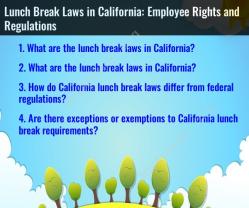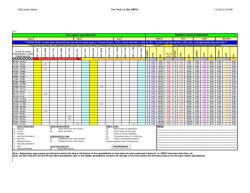What are GS levels?
The GS (General Schedule) system is the primary pay scale for federal employees in the United States. It is used by various federal agencies to determine the salaries of their employees. The GS levels represent different grades of work, with higher GS levels typically corresponding to higher levels of responsibility and complexity. Here's an overview of the GS pay structure:
1. GS Levels:The GS system consists of 15 pay levels, commonly referred to as GS-1 through GS-15. Each level is associated with specific qualifications, responsibilities, and job requirements.
2. Pay Increments:Within each GS level, there are steps or pay increments. Employees typically advance to the next step within their GS level after a certain period of satisfactory performance. The number of steps can vary, but it's usually around 10.
3. Pay Grades:The GS levels are divided into pay grades. For example, GS-1 to GS-4 might belong to one pay grade, GS-5 to GS-9 to another, and so on. Each pay grade represents a range of skills and responsibilities.
4. Advancement and Promotion:Advancement in the GS system often involves promotion to a higher GS level. Promotions are usually based on factors such as job performance, experience, and time in service.
5. Step Increases:Employees can also receive step increases within their current GS level based on performance and time in service. Each step increase comes with a higher salary.
6. Locality Pay:Federal employees' salaries can be affected by locality pay, which adjusts their pay based on the cost of living in their geographic area. Some areas with higher costs of living offer higher locality pay.
7. Special Rates:Some positions within the federal government have special rates of pay that differ from the standard GS levels due to factors like the nature of the work or labor market conditions.
8. Job Responsibilities:The GS levels are often associated with specific job responsibilities and qualifications. For example, GS-5 might be entry-level positions, while GS-15 could involve management or highly specialized roles.
9. Equivalents in Other Systems:The GS system has equivalents in other federal pay systems, such as the Senior Executive Service (SES) for high-level executives and the Wage Grade (WG) system for trades and crafts.
10. Step Increases vs. Promotions:Step increases are more about time in service and performance within a specific GS level, while promotions involve moving to a higher GS level with increased responsibilities.
It's important to note that the GS system is just one aspect of federal employment. Federal agencies may also have their own specific job classifications and pay structures. Additionally, salaries in the GS system can vary based on factors like location, agency, position, and employee performance. If you're interested in federal employment, it's advisable to review the specific job announcements and guidelines provided by the relevant agencies.










